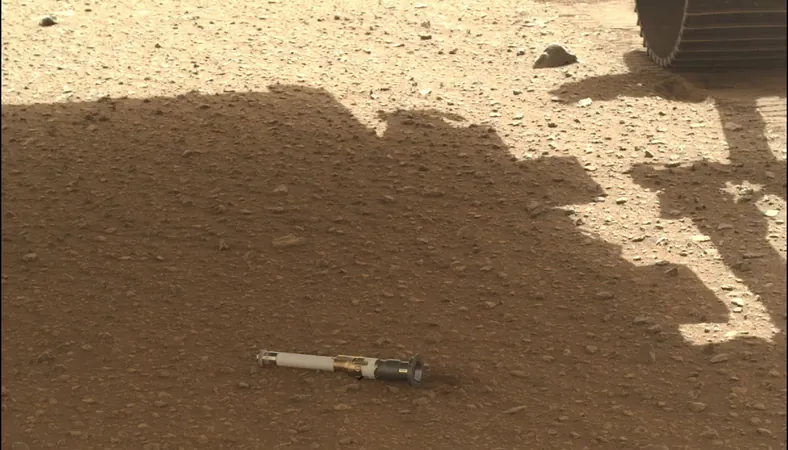
Revolutionary Concrete Alternative Made from Fungi and Bacteria Could Save the Planet!
2025-04-27
Author: Amelia
Concrete's Environmental Impact: A Growing Concern
Concrete is an essential part of modern infrastructure, from towering skyscrapers to everyday sidewalks. However, its primary ingredient, cement, is a major environmental villain, responsible for approximately 8% of global carbon dioxide emissions. The quest for eco-friendly alternatives is becoming increasingly urgent as the world grapples with climate change.
Enter the Game-Changer: Fungi-Based Concrete!
Engineers at Montana State University have struck gold with an innovative solution: a fungi-based concrete alternative that harnesses the power of living organisms. By blending fungal mycelium and beneficial bacteria, they're crafting a resilient material that could one day replace traditional concrete!
The Magic of Engineered Living Materials (ELMs) Explained
This groundbreaking project falls under the umbrella of engineered living materials (ELMs), a frontier in sustainable construction that blends living organisms with inert components to yield remarkable properties. Unlike many ELMs that quickly lose their effectiveness, this fungi-bacterial hybrid maintains its properties for at least four weeks, a significant achievement in the search for durable alternatives.
How Does It Work? A Deep Dive!
At the heart of this innovative material is Neurospora crassa, a fast-growing fungus that establishes a robust mycelial network serving as a structural framework. By adding Sporosarcina pasteurii, a special bacterium, researchers activate a process known as microbially induced carbonate precipitation (MICP). This process converts soft materials like sand into something solid and cement-like.
A Smart Solution with Architectural Flexibility!
What’s even more impressive is the ability to control the internal structure, allowing the material to mimic the durability and strength of cortical bone. This architectural versatility means researchers can design a fungi-based concrete that is not only strong but also responsive and capable of self-repair under stress.
The Future of Building: A Sustainable Vision!
This pioneering use of fungal mycelium marks a significant milestone in construction materials. While development is still in the infancy stages, the potential this fungi-based concrete holds could dramatically lower our dependency on conventional cement and cut down carbon emissions.
Challenges Ahead: The Path to Adoption
Despite the promise of this living material, hurdles such as cost, scalability, and industry acceptance remain. If researchers can extend the lifespan of this innovative material and optimize production processes, we may soon transform the way we build our world for the better!









 Brasil (PT)
Brasil (PT)
 Canada (EN)
Canada (EN)
 Chile (ES)
Chile (ES)
 Česko (CS)
Česko (CS)
 대한민국 (KO)
대한민국 (KO)
 España (ES)
España (ES)
 France (FR)
France (FR)
 Hong Kong (EN)
Hong Kong (EN)
 Italia (IT)
Italia (IT)
 日本 (JA)
日本 (JA)
 Magyarország (HU)
Magyarország (HU)
 Norge (NO)
Norge (NO)
 Polska (PL)
Polska (PL)
 Schweiz (DE)
Schweiz (DE)
 Singapore (EN)
Singapore (EN)
 Sverige (SV)
Sverige (SV)
 Suomi (FI)
Suomi (FI)
 Türkiye (TR)
Türkiye (TR)
 الإمارات العربية المتحدة (AR)
الإمارات العربية المتحدة (AR)